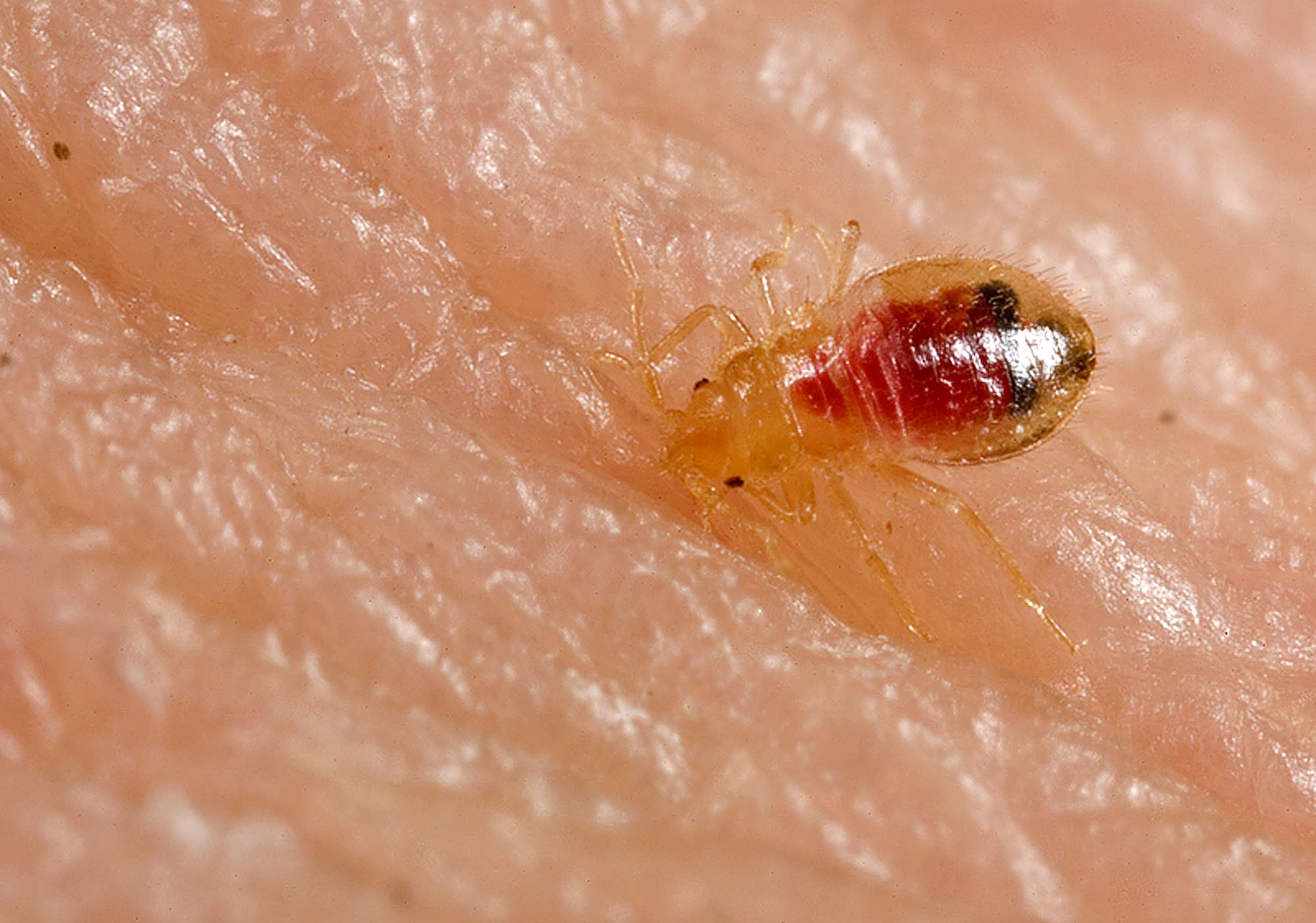Файл:Bed bug nymph, Cimex lectularius.jpg

| Описание | ID#: 9819
Description: This 2006 photograph depicted a dorsal view of a bed bug nymph, Cimex lectularius, as it was in the process of ingesting a blood meal from the arm of a “voluntary” human host, which could be seen filling the insect’s abdomen. Bed bugs are not vectors in nature of any known human disease. Although some disease organisms have been recovered from bed bugs under laboratory conditions, none have been shown to be transmitted by bed bugs outside of the laboratory. The common bed bug is found worldwide. Infestations are common in the developing world, occurring in settings of unsanitary living conditions and severe crowding. In North America and Western Europe, bed bug infestations became rare during the second half of the 20th century and have been viewed as a condition that occurs in travelers returning from developing countries. However, anecdotal reports suggest that bed bugs are increasingly common in the United States, Canada, and the United Kingdom. An immature bed bug may take several months to mature to an adult and an adult bed bug can live for up to one year. During development, the young bed bug will feed frequently on the blood of humans, and can exist for many months between blood meals. Bed bugs inject saliva into the blood stream of their host to thin the blood, and to prevent coagulation. It is this saliva that causes the intense itching and welts. The delay in the onset of itching gives the feeding bed bug time to escape into cracks and crevices. In some cases, the itchy bites can develop into painful welts that last several days. The common bed bug C. lectularius is a wingless, red-brown, blood-sucking insect that grows up to 7 mm in length and has a lifespan from 4 months up to 1 year. Bed bugs hide in cracks and crevices in beds, wooden furniture, floors, and walls during the daytime and emerge at night to feed on their preferred host, humans. |
|---|---|
| Автор | CDC/ Harvard University, Dr. Gary Alpert; Dr. Harold Harlan; Richard Pollack. Photo Credit: Piotr Naskrecki |
| Время создания | 2006 |
| Источник | http://commons.wikimedia.org/wiki/File:Bed_bug_nymph,_Cimex_lectularius.jpg |
| Лицензия |
PD |
История файла
Нажмите на дату/время, чтобы просмотреть, как тогда выглядел файл.
| Дата/время | Миниатюра | Размеры | Участник | Примечание | |
|---|---|---|---|---|---|
| текущий | 13:09, 4 октября 2011 |  | 2000 × 1403 (207 КБ) | Abarmot (обсуждение | вклад) | {{Файл | Описание = ID#: 9819 Description: This 2006 photograph depicted a dorsal view of a bed bug nymph, Cimex lectularius, as it was in the process of ingesting a blood meal from the arm of a “voluntary” human host, which could b |
- Редактировать этот файл, используя внешнюю программу (подробнее см. в руководстве по установке)
Использование файла
Следующая 1 страница ссылается на данный файл: